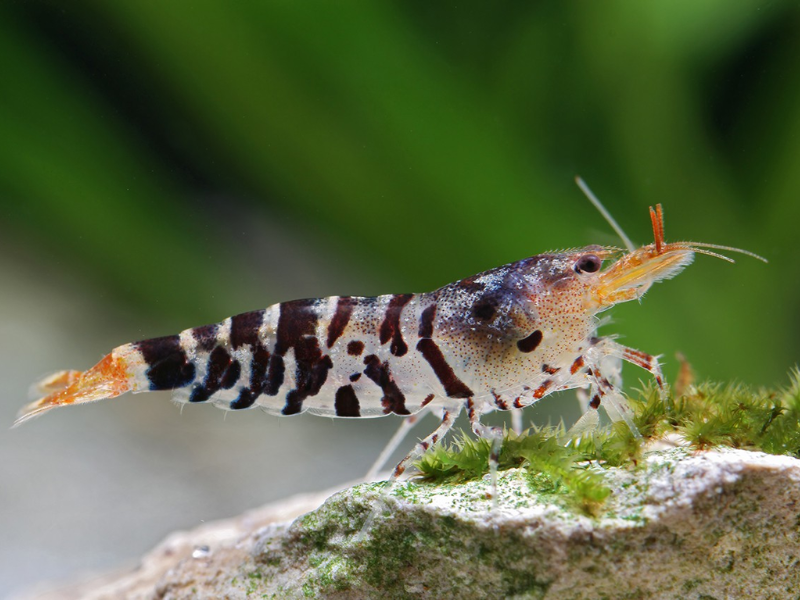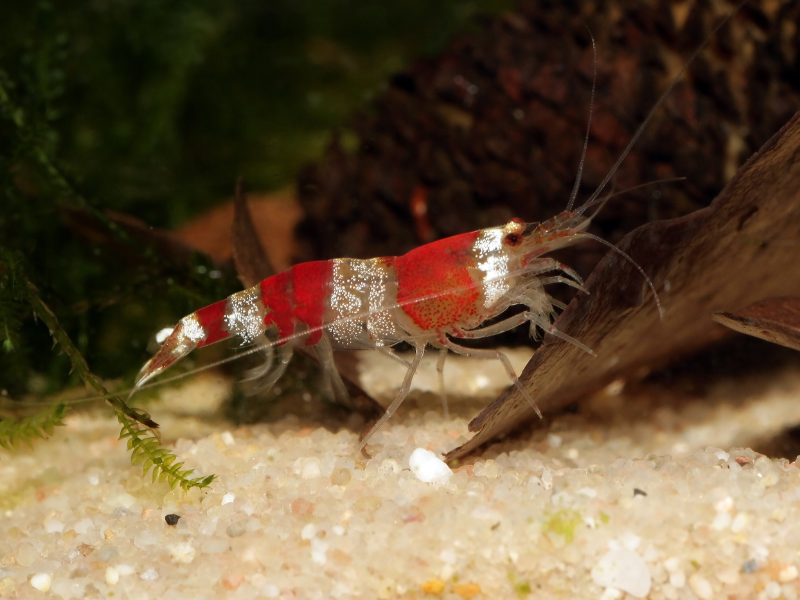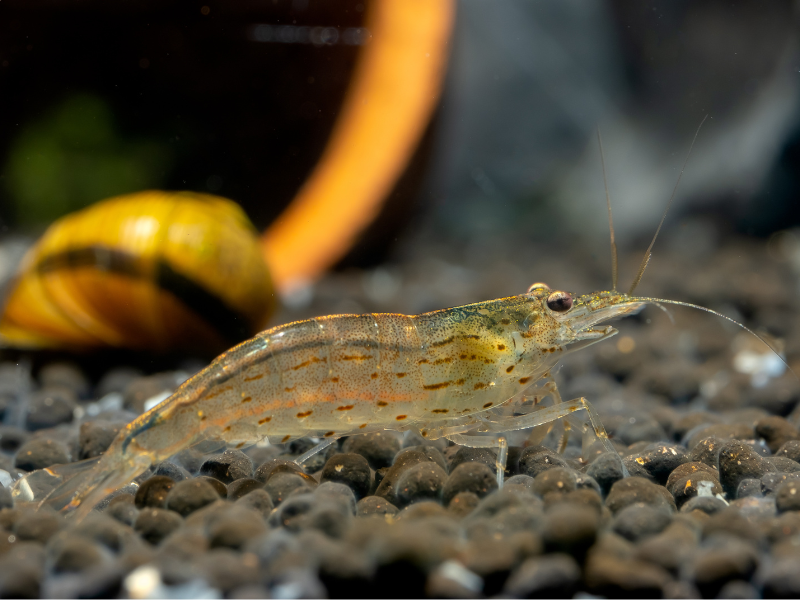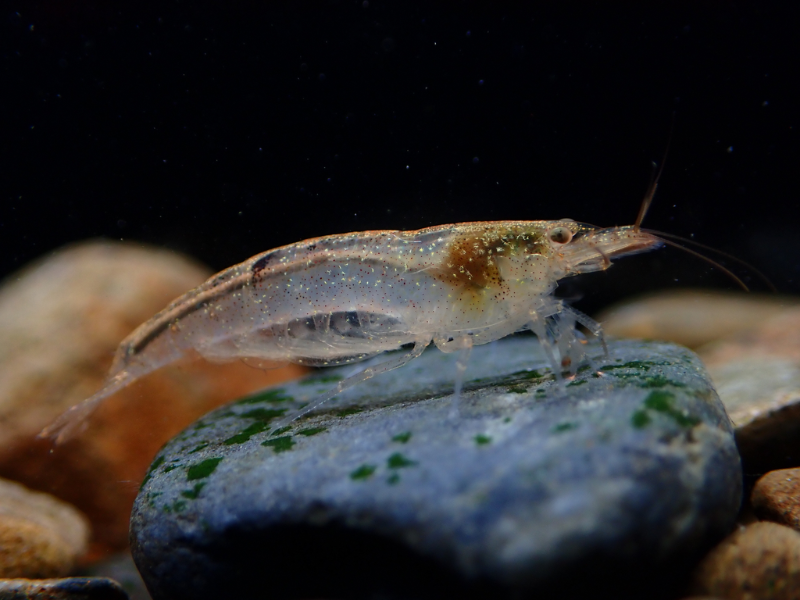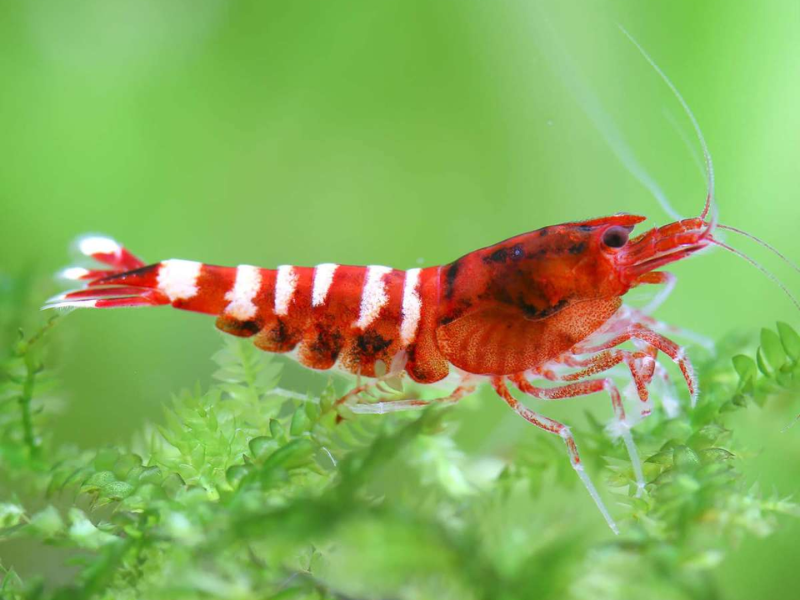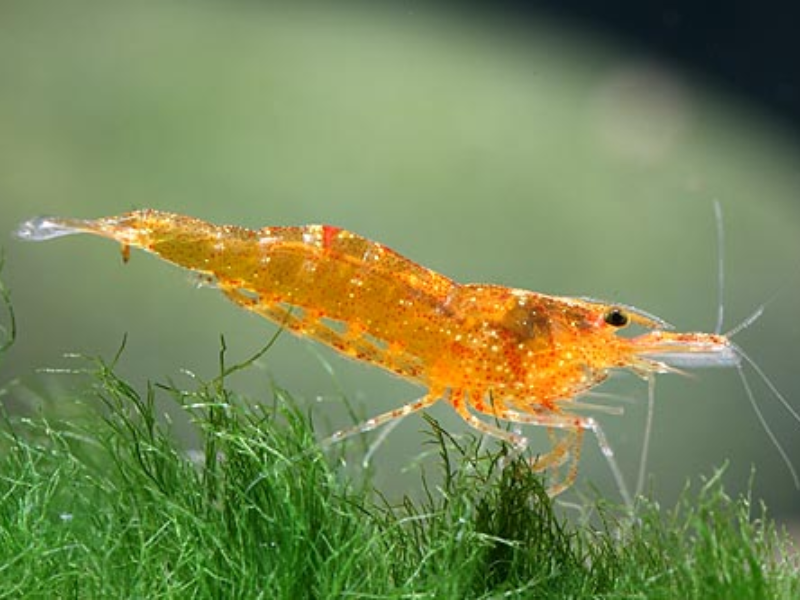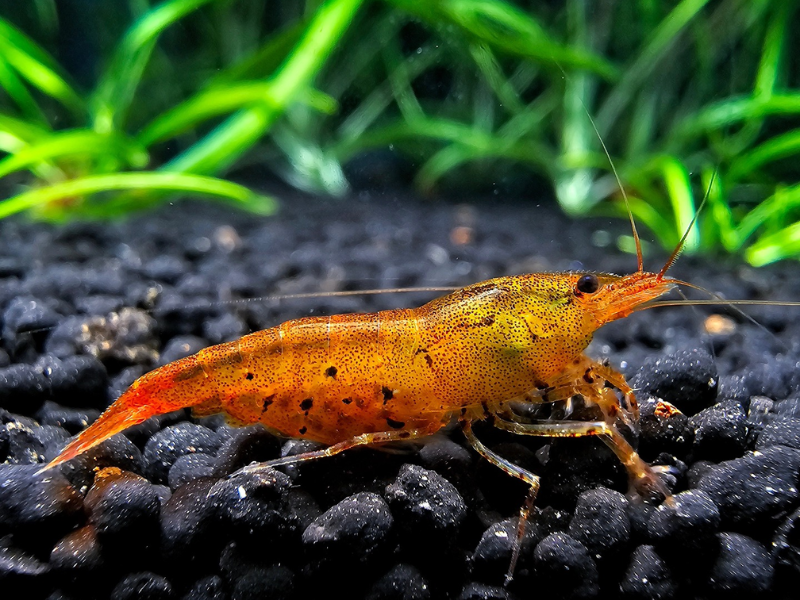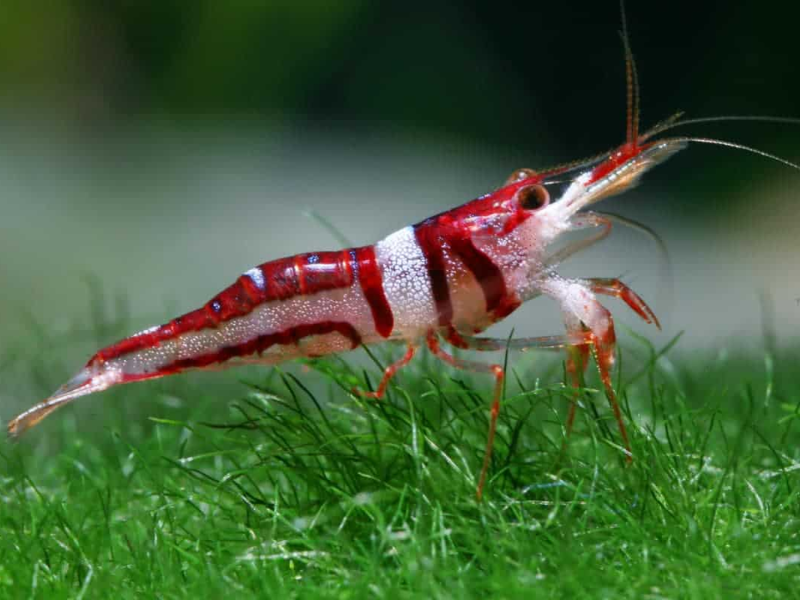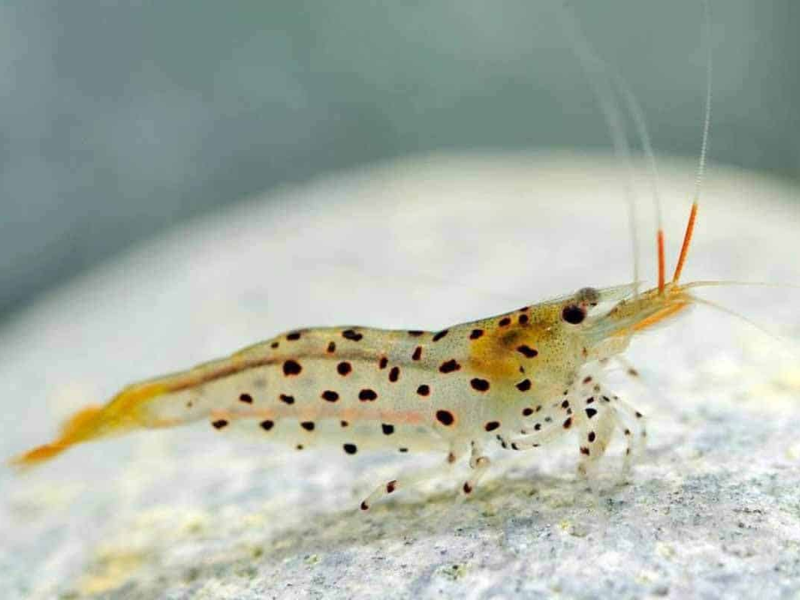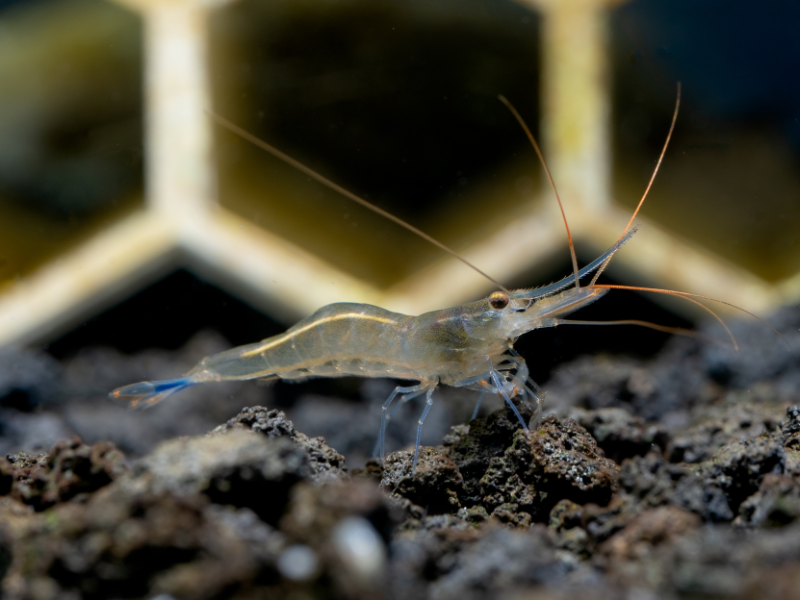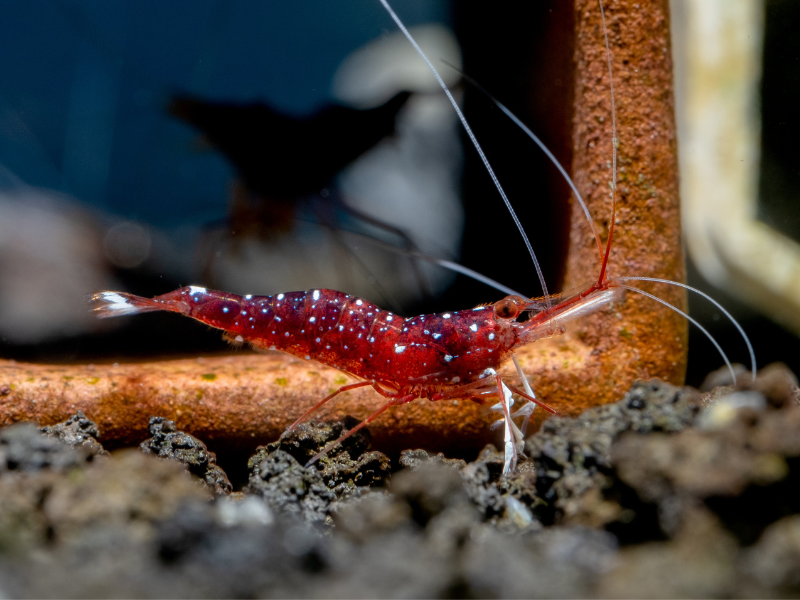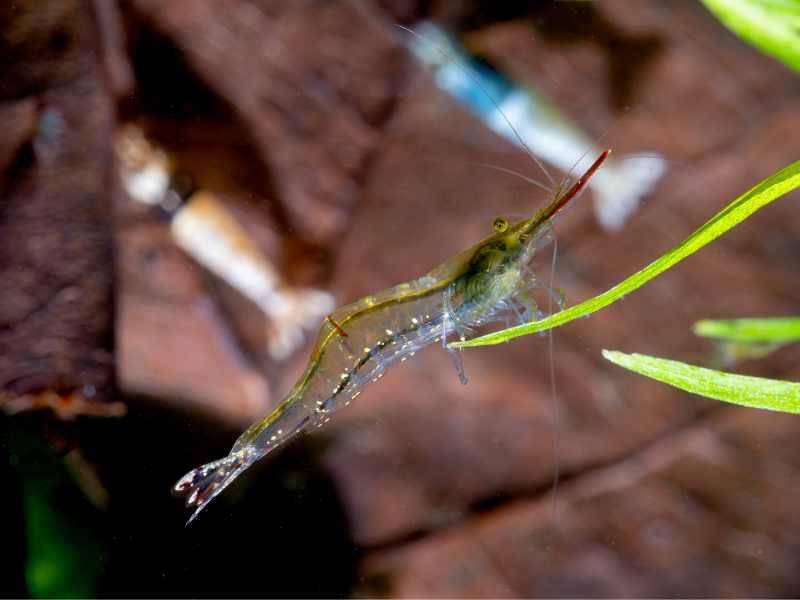Caridina cf. babaulti
Babaulti Shrimp
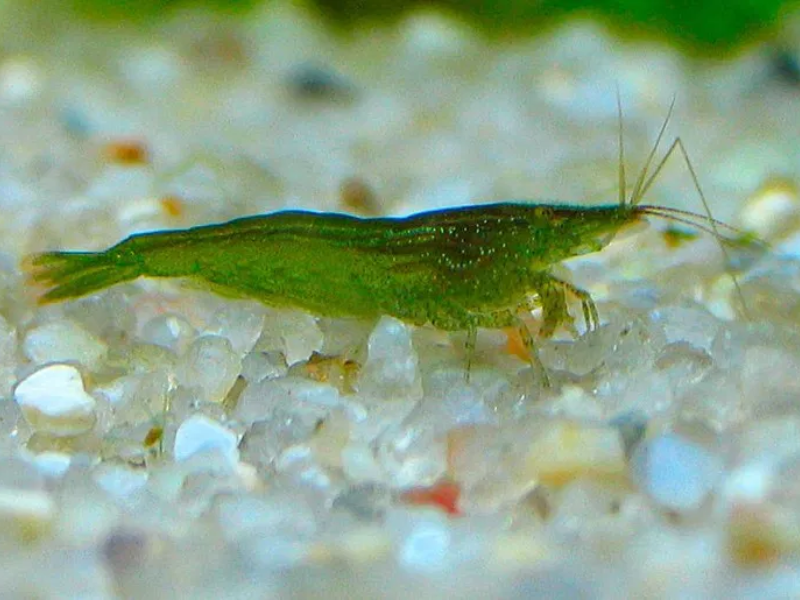
Scientific Classification
Quick Stats
Aquarium Building Information
About This Species
Basic Description
Detailed Description
A fascinating crustacean from the Atyidae family, the Babaulti Shrimp is a popular choice for experienced hobbyists seeking a more unique and moderately challenging species. In their native habitats across Asia, they inhabit slow-moving streams and pools dense with submerged vegetation and leaf litter. Replicating this environment is key to their success in captivity. A mature aquarium with ample live plants, driftwood, and rocks provides not only shelter but also crucial surface area for the growth of biofilm, a primary food source. These shrimp are methodical grazers, spending nearly all their time picking at surfaces, which helps maintain a clean and balanced micro-ecosystem.
Water parameter stability is more critical than achieving exact numerical targets. As arthropods, they must molt to grow, a process that is highly stressful and susceptible to failure if water chemistry fluctuates suddenly. Consistent water hardness and dissolved solids levels are particularly important. A gentle water flow, easily achieved with an air-driven sponge filter, is ideal as it oxygenates the water without creating strong currents that could buffet them. While they are resilient, a well-cycled tank is a prerequisite.
These shrimp are peaceful and social, displaying more natural and confident behavior when kept in a proper group. A solitary shrimp will be reclusive and stressed. Their low bioload means a sizable colony can be kept without significantly impacting the system's stability. Their diet is omnivorous and should be varied. While they constantly consume biofilm and algae, this should be supplemented. A rotation of high-quality sinking pellets, algae wafers, blanched vegetables like spinach or zucchini, and occasional protein-rich frozen foods will ensure they receive a complete nutritional profile, promoting robust health, proper molting, and successful breeding.
Scientific Description
Caridina cf. babaulti is a freshwater decapod crustacean belonging to the Atyidae family, a group characterized by chelipeds (claws) adapted for scraping and collecting fine particulate matter. The 'cf.' (confer, meaning 'compare with') designation signifies that while it closely resembles the described Caridina babaulti, its taxonomic status is uncertain and it is part of a species complex awaiting formal description. Morphologically, it exhibits a compressiform body shape, meaning it is laterally flattened. The body plan consists of a cephalothorax protected by a carapace, and a segmented abdomen terminating in a telson and uropods, which form a tail fan. It possesses several pairs of pleopods (swimmerets) under the abdomen, used for locomotion and, in females, for brooding eggs.
Ecologically, Caridina cf. babaulti functions as a primary consumer and detritivore in its native Asian freshwater ecosystems. It plays a significant role in nutrient cycling by consuming algae, microorganisms collectively known as biofilm, and decaying organic matter (detritus). This feeding strategy is supported by a low metabolic rate and low oxygen consumption, adaptations that allow it to thrive in slow-moving, organically rich waters. The species' IUCN status is listed as Least Concern, indicating that its wild populations are currently considered stable and not facing immediate threats. Physiologically, its life cycle is governed by ecdysis (molting), a process essential for growth and reproduction. This process is hormonally regulated and highly dependent on environmental stability, particularly the osmoregulatory pressure and the availability of minerals from the water column, which are essential for hardening the new exoskeleton.
Breeding Description
Breeding the Babaulti Shrimp is considered of moderate difficulty, making it an achievable and rewarding project for the dedicated hobbyist. Unlike many other Caridina species that have a complex larval stage requiring brackish water, this species reproduces entirely in freshwater. The young hatch as miniature, fully-formed versions of the adults, which greatly simplifies their captive care. For successful breeding, a dedicated, species-only tank is highly recommended to ensure the highest survival rate for the offspring.
To begin, establishing a healthy, mixed-gender colony is essential. It is best to have a higher ratio of females to males, such as one male for every three to four females, to prevent females from becoming stressed by constant mating attempts. Sexing these shrimp is straightforward: females are generally larger and more robust than males. The most telling feature is the female's deeper, rounded abdominal plating (pleura), which forms a protected chamber for carrying eggs. Males are smaller, more slender, and have a straighter underbelly.
Once a female undergoes a successful molt, she releases pheromones that attract males. After mating, the female will pass her eggs, fertilizing them as she moves them to her swimmerets beneath her tail. A female carrying eggs is referred to as "berried." She will carry the clutch for several weeks, constantly fanning them to provide oxygen and prevent fungal growth. The incubation period is temperature-dependent, with warmer water leading to a shorter duration. The shrimplets are tiny and vulnerable upon hatching. They require no special food, as they will immediately begin grazing on the abundant biofilm and microorganisms in a mature tank. Ensure the aquarium's filter intake is covered with a fine sponge to prevent the fry from being drawn in. Maintaining pristine and, most importantly, stable water conditions is paramount for the delicate shrimplets' survival and growth.
Generate Printable Card
Create a printable card for this creature to display in your store or aquarium. The card includes a QR code for quick access to more information.
